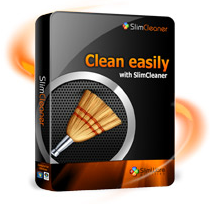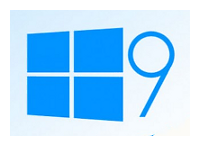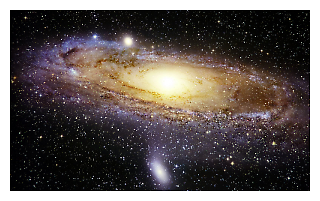Geek Software of the Week: SlimCleaner – Free!
 Need to clean and optimize your PC? Now you can with SlimCleaner – Free!
Need to clean and optimize your PC? Now you can with SlimCleaner – Free!
Clean & optimize your PC with a crowd-sourced approach.
SlimCleaner is the world’s first software that lets you clean and optimize Windows systems using a crowd-sourced approach. SlimCleaner uses aggregated-cloud feedback to recommend optimal settings for programs, start-ups and services.
SlimCleaner uses what’s called “authoritative ranking” to ensure that the ratings for your programs are accurate and that they reflect what people really think. It works by weighing the ratings of each contributor against their previous levels of accuracy and against the ratings of high-ranking users.
What it does: SlimCleaner is the first software to use social networking for PC repair and optimization.
SlimCleaner combines the industry’s fastest PC cleaning engine with a community of users who provide real-time feedback to improve computer performance. SlimCleaner uses social networking and community-sourced feedback to tell people what’s on their computer, and what they can do about it: it’s like having an army of tech-savvy geeks helping consumers maintain their machines.
Cleaner
The industry’s fastest, most robust engine for analyzing and cleaning unneeded files that slow down a PC. SlimCleaner’s new cleaning engine is fast and powerful, analyzing entire computers in as little as one second.
SlimCleanerOptimize
The world’s first cloud-based optimization engine that allows users to adjust startups and services that impact PC performance, using community-powered feedback.
“More Info” Dialogs: Dialog boxes that give detailed information about what an item on a PC does and how the community views it, including peer reviews, “what should I do?” and comments from other users.
Granular Controls: Adjustable filters let users identify unneeded software and startups in seconds.
Badges: In addition to a personalized Wall, registered users earn badges and rewards based on various factors such as accuracy of their ratings. The Wall contains users’ personal profiles, ratings’ history, comments and trust network – whom they trust and who trusts them.
SlimWare AV Cloud Access: Lets users scan startup vectors for viruses and view results from multiple antivirus engines.
SlimCleanerUninstaller
The first community-powered uninstaller with access to SlimWare Utilities’ community feedback, reviews and comments. SlimCleaner uses a real-time stream from the cloud to compare against community feedback and make recommendations about which applications to keep or remove.
SlimCleanerSoftware Updater
Lets users check for updates to the software on their PC and install those updates directly from SlimCleaner. SlimCleaner checks and installs updates for tens of thousands of commonly used software programs. Software updates are downloaded from SlimWare Utilities’ cloud, and all updates are scanned for viruses using CloudScan technology, SlimWare Utilities’ proprietary system of scanning files with multiple antivirus engines.
SlimCleanerIntelligent Disk Defrag
Allows users to run a personalized defrag based on their specific PC hardware. SlimCleaner will identify a PC’s hardware configuration and allow users to start a defrag based on settings intelligently determined by SlimCleaner based on that individual PC.
SlimCleanerDisk Tools
Easy to use disk utilities that allow you to manage, clean, and secure both internal and removable media using state of the art technology. Identify the data clogging up your drives or securely wipe sensitive information using a visually intuitive design.
Disk Analyzer Disk Analyzer provides a visual display of a PC’s hard drive so that consumers can analyze the contents and easily identify what’s taking up disk space. Disk Analyzer reads the contents of a drive to flag large files that are taking up an extraordinary amount of space, giving consumers the option to remove them. Users have the ability to view files by directory or file type. This feature is especially useful for consumers who use Ultrabooks and solid state drives, which offer less storage space and make it more important to have a clean, efficient drive.
Disk Wiper Disk Wiper is a clean-up tool that overwrites the raw sectors of a drive with random data to securely erase data that users would like to dispose of. In “free space” mode, Drive Wiper overwrites sectors that house unwanted data, left over from deleted files, with random data. This process secures the drive by making previously deleted files unreadable, without harming any files that actually exist. In “entire drive” mode, secondary partitions (NOT the C:\ drive) can be completely wiped of both currently-existing files and previously-deleted files.
SlimCleaner Solid-State Drive Optimization:
Allows users to optimize the layout of files on their solid-state drives to speed-up loading programs and opening documents. The intelligent defrag system works with solid state drives by organizing files into logically sequential sectors while minimizing wear on the drive.
SSD Optimization means logically defragging the hard drive, so that to Windows, files are stored in logically sequential sectors. This process gets rid of the overhead Windows incurs when files are stored in non-logically-sequential sectors, and makes it easier and faster for the machine to load programs and open documents. Improvements in solid-state drive write cycles and endurance makes SSD optimization a good way to enhance solid state performance.
SlimCleanerDuplicate Finder
Provides users with a quick, automated way to find and eliminate unnecessary duplicate files that can clutter and slow down a hard drive. The duplicate file finder wipes out extra or unneeded copies of files — including text files, videos, music files, etc. — that can take up space. The feature includes settings to allow for different levels of analysis.
The duplicate finder feature includes the company’s new “IntelliMatch Scan” engine, which uses SlimWare Utilities’ IntelliMatch technology to identify all duplicates. The engine works similar to a high-end anti-virus to read the various parameters of each file and accurately identify all duplicates across an unlimited amount of drives.
SlimCleanerHijack Log
Scan for startup items, toolbars, BHOs, ActiveX controls, browser plug-ins and other third-party or malicious items that can “hijack” or modify a system. Get direct access to SlimWare’s cloud of antivirus scanners, or alternatively, VirusTotal, using the VirusTotal public API.
SlimCleanerWindows Tools
Conveniently organizes system tools and settings in one easy interface. See all the windows tools such as device manager, performance monitor, security settings, restore settings, system Information and much more.
 Yep… with Lixux Desktops expanding, especially with the success of the Chromebook, Microsoft had better get Windows 9 right, or they are history!
Yep… with Lixux Desktops expanding, especially with the success of the Chromebook, Microsoft had better get Windows 9 right, or they are history! Mark your calendars!
Mark your calendars!




 So, because we may one day simulate a universe in a computer that PROVES we are a computer simulation? Ah, no. Logic says, no. And, wait… philosophers have a journal? Is that allowed?
So, because we may one day simulate a universe in a computer that PROVES we are a computer simulation? Ah, no. Logic says, no. And, wait… philosophers have a journal? Is that allowed? On many Linux distros, “xkill” is a common command that is VERY handy. Now, you can use a Windows version of “xKill.”
On many Linux distros, “xkill” is a common command that is VERY handy. Now, you can use a Windows version of “xKill.”